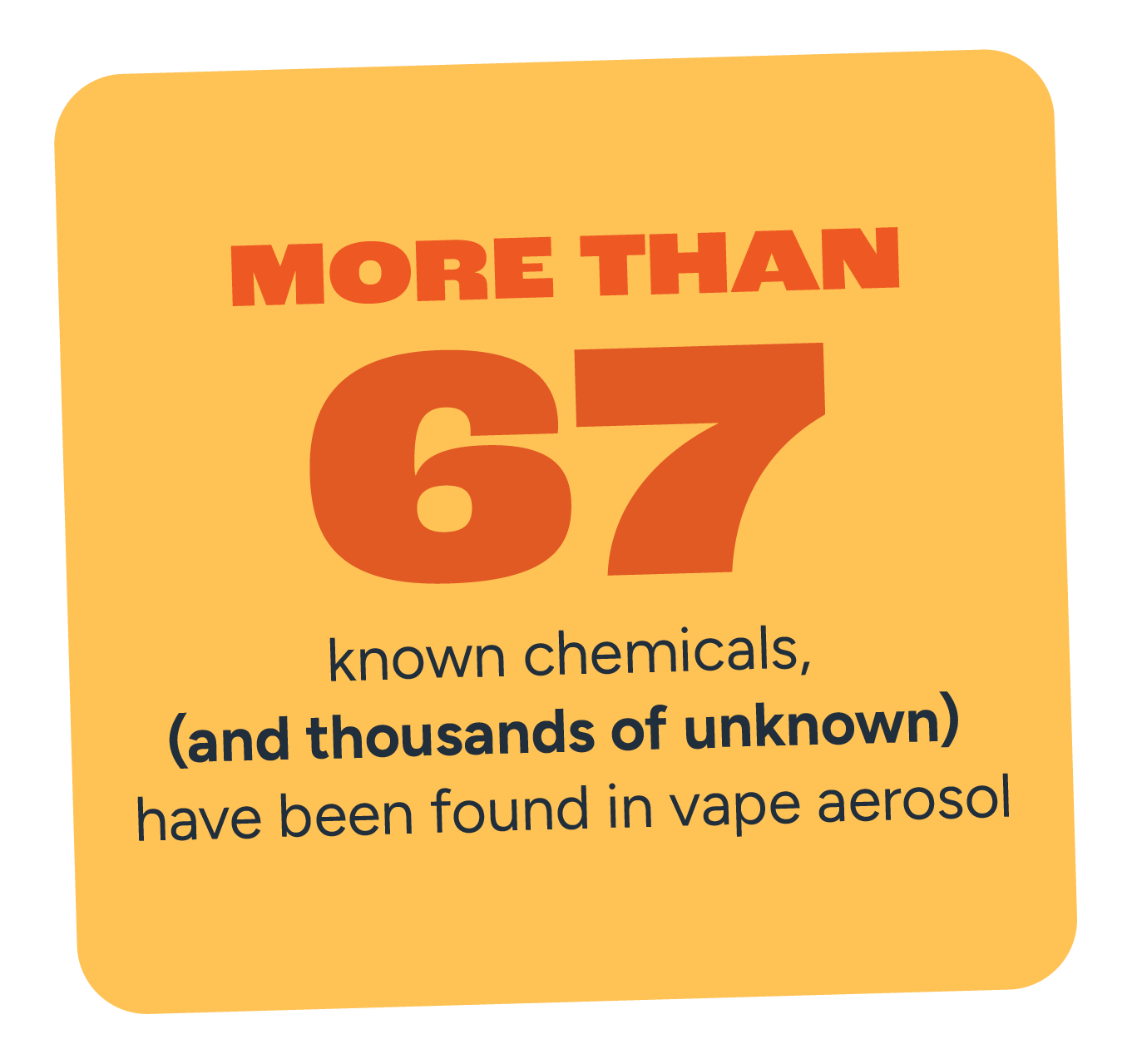Vaping truths
Here are the real facts about vaping. Pick one fact to represent in your video, along with one call-to-action (Spanish), and you could win the grand prize. Choose a fact below or find more on the vaping fact sheet.
The Chemicals
Vape/e-cigarette aerosol contains harmful chemicals like ultra-fine particles, heavy metals like nickel, tin, lead, and other cancer-causing chemicals as well as thousands more that have not yet been identified.
Known chemicals in vape/e-cigarette aerosol include:
Acrolein, which is used to kill weeds.
Diethylene, which is found in antifreeze.
Benzene, which is found in car exhaust.
Formaldehyde which is used to preserve dead bodies.
THE MENTAL AND PHYSICAL HEALTH HARMS
Nearly all vapes/e-cigarettes contain massive amounts of nicotine.
Nicotine can change brain chemistry, making it easier for teens to get addicted to nicotine and other harmful substances. In fact, young people who vape are more likely to become smokers.
Vaping can make you more stressed as the high nicotine content and resulting addiction can increase anxiety and depression.
Nicotine is a toxic chemical. Vaping nicotine raises your blood pressure and spikes your adrenaline, which increases your heart rate and increases the risk of stroke, heart attack and diseased arteries.
The INDUSTRY
The commercial tobacco industry* lied about targeting teens. Its deceptive marketing, such as promoting candy flavors, was designed to hook kids early.
The commercial tobacco industry designs flavors and packaging to attract kids by mimicking candy, sugar cereal brands, and other types of kid-friendly flavors.
Flavored products are driving the youth vaping epidemic. More than 85% of youth who vape use flavored products. E-cigarettes are sold in more than 15,000 flavors, from menthol to gummy bear and bubble gum. It even comes in Unicorn Poop Flavor. Seriously.
The commercial tobacco industry has targeted kids as young as 3rd grade by funding youth summer camps, visiting schools and paying community and church groups to distribute materials.
*The term “commercial tobacco” refers to products manufactured by companies for recreational and habitual use in cigarettes, e cigarettes/vapes, smokeless tobacco, pipe tobacco, cigars, hookahs, and other products. Commercial tobacco is mass-produced and sold for profit. Commercial tobacco does not include or refer to sacred tobacco that are used by many Native American tribes in spiritual and cultural ceremony and prayer.
call to action
What's a call to action? It means exactly that - telling your audience what they can do about something - how can they take action? It can be as simple as "Stop vaping." Check out this document (Spanish) for more information about your call to action. Here are some other call to action ideas to go with your video's Vaping Fact:
RESOURCES
QUIT VAPING/E-CIGARETTES - MyLife, MyQuit™
A free and confidential way to quit. My Life, My Quit™ is available to all Minnesota youth ages 13-17 and offers up to five coaching sessions through text to chat, online chat, and phone calls, as well as youth specific materials. Resources are also available for parents/guardians, educators, healthcare professionals, and community organizations serving youth of all ages.
MENTAL HEALTH SUPPORT FOR TEENS - Change to Chill™
A free, award-winning mental well-being interactive website tailored to both teens and the adults who work with them. Change to Chill helps teens become more aware of things that stress them out and equips them with relevant tools and resources to better manage stress and anxiety.










